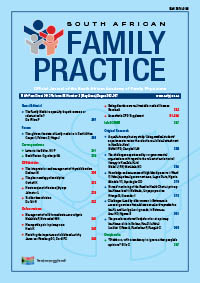“My patient has a coronary stent”: concerns for the anaesthetist
Keywords:
coronary stent, Percutaneous coronary intervention (PCI), coronary artery disease
Abstract
Percutaneous coronary intervention (PCI) is a relatively new mode of therapy for the management of patients with coronary artery disease (CAD). Balloon angioplasty, a type of PCI, was first performed in the late 1970s, but suffered the main complications of early restenosis because of an inflammatory reaction in the media, causing neointimal proliferation that required further intervention. In 1986, the French cardiologist, Puel, implanted the first coronary stent in a human in France. However, it was only in 1994 that the US Food and Drug Administration approved the use of coronary stents in human subjects. It has been shown that PCI is no more effective in preventing a major cardiac event or death, than optimal medical therapy, in patients with stable CAD. However, PCI has shown benefits over medical therapy in patients with unstable coronary disease.
Section
Anaesthetic Supplement
By submitting manuscripts to SAFP, authors of original articles are assigning copyright to the South African Academy of Family Physicians. Copyright of review articles are assigned to the Publisher, Medpharm Publications (Pty) Ltd, unless otherwise specified. Authors may use their own work after publication without written permission, provided they acknowledge the original source. Individuals and academic institutions may freely copy and distribute articles published in SAFP for educational and research purposes without obtaining permission.

